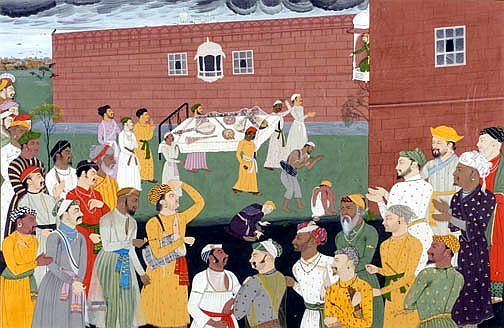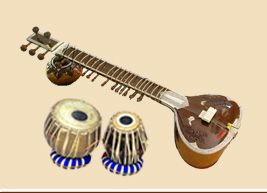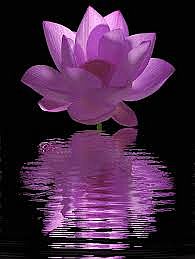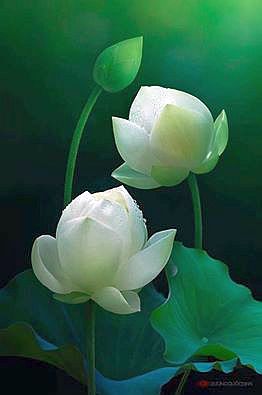Continued from Part Eighteen – Lakshana Granthas– Continued
Part Nineteen (of 22 ) – Lakshana Granthas – Continued
14. Venkatamakhin – Chatur-dandi-prakashika – Mela and Melakarta
Venkatamakhin also referred to as Venkateshwara Dikshita and Venkatadhvari was the son of Govinda Dikshita, the author of Sangita Sudha and the minister of the Nayak Kings at Thanjavuru.
Venkatamakhin was said to be a distinguished Mimamsa scholar; and, is credited with Karmāntha Mimamsa, a work on the Mimamsa and Vrittikabharana, a commentary on Kumarila Bhatta’s work. Venkatamakhin is also said to have composed twenty four Ashtapadis on Lord Tyagaraja, the presiding deity at Tiruvarur temple.
Venkatamakhin shows enormous respect towards his father Govinda Dikshita, mother Nagamba and his elder brother Yajnanarayana Dikshita. He mentions that his elder brother Yajnanarayana Dikshita taught him Tarka (Logic), Vyakarana (Grammar) and Mimamsa Shastra, as also Music. Yajnanarayana Dikshita, who also was in the service of Raghunatha Nayaka, was a renowned scholar of his times. He is said to have written a play Raghunatha-Vilasa and a Champu-kavya Raghunatha Bhupa Vijaya in honor of the King. Apart from that, Yajnanarayana Dikshita is credited with Shitya-Ratnakara a treatise on Sanskrit literature and Grammar.
Neelakantha Dikshita a minister in the Court of Nayak Kings was a disciple of Venkatamakhin. Neelakantha Dikshita was also a well known poet of his times; and is said to have written a Kavya Siva Leelarnava, which describes the Leelas of Lord Sri Meenakshi Sundareswara of Madura.
[The picture at the top of this post is taken from a painting made by Sri S Rajam. There is an interesting anecdote connected with it. When Sri Rajam intended to provide an illustration of Venkatamakhin as an introductory painting for the Apr 2008-March 2009 calendar brought out by L&T, he had no earlier pictures of Venkatamakhin to guide him. His research into the archives of Sri Kanci Mutt led him to an interesting detail showing that Venkatamakhin who was also a skillful vainika wore his long hair in a coil such that it did not touch his body; he coiled it atop his head. Shri S Rajam then pictured Venkatamakhin with coiled locks of hair, rudraksha-mala; and surrounded by musical instruments such as Veena, Tambura etc. as also scrolls of ancient manuscripts, lending the picture an air scholarship and a spiritual aura.]
Chatur-dandi-prakashika
Venkatamakhin fame rests mainly on his work Chatur-dandi-prakashika, which he wrote (perhaps around the year 1650) under the patronage of the Fourth Nayaka King Vijaya Raghava who succeeded Raghunatha Nayaka and ruled up to 1672.
Chatur-dandi-prakashika is a treatise on Music that illumines four forms of song-formats: Gita, Prabandha, Thaya and Aalapa (Gita-prabandha-sthaya-alapa-rupa-chatur –dandi) which seemed to have formed the pattern (or profile) for concert performances during 14-15th centuries. In that context, he makes frequent references to Gopala Nayaka (1205-1315) and to Tanappa-charya whom he calls Parama-guru ( Guru’s Guru) . Both of these were, perhaps, renowned performers of Charurdandi.
Along with the text, Venkatamakhin is said to have composed Lakshana-gitas on a large number of Ragas.
The text of the Chatur-dandi-prakashika was said to contain ten Chapters (Prakarana), each dealing with: Veena, Sruti, Svara, Mela, Raga, Alapa, Thaya, Gita, Prabandha and Taala. Among these, portions of Prabandha-prakarana and the entire Taala-prakarana are lost. But, interestingly, it is the Appendix (Anubandha) to the main text that brought focus on Venkatamakhin.
The Veena-prakarana generally follows the concepts and techniques described in Somanatha’s Raga-vibodha and Ramamatya’s Svara-mela-kalanidhi ; and, discusses about two kinds of fret-arrangements and tuning of the Veena-strings. Venkatamakhin mentions three types of Veena: Shuddha-mela-veena; Madhyama-mela-veena; and, Raghunathendra-mela-veena.
While describing the arrangement of the frets on each of the three types of Veena, Venkatamakhin follows the illustrations provided by Ahobala Pandita. According to that, arrangement of frets could be done in two ways: One with fixed frets on which all Ragas could be played (Sarva-raga-mela-veena); and the other with frets specially placed to suit playing of a particular Raga (Eka-raga-mela-veena) .
Venkatamakhin informs that during those days, besides the common Shuddha and Madhya-mela Veena described by Ramamatya, there was also a Veena with a higher tuning, i.e. in this tuning the first three strings are ignored and the fourth one tuned to Shadja has frets for three Sthanas. It was named by Govinda Dikshita as Raghunathendra-mela-veena, in honour of the King.
In the Second Chapter dealing with Srutis, Venkatamakhin ,in the traditional manner, talks about 22 Srutis and their distribution over Seven Svaras. He explains that the 22 Srutis are not placed at equal intervals, but are placed at specific intervals depending upon the Svara structure in the Raga. For instance, he says, the Shadja and Shuddha Rishabha on the Veena should be divided equally into three parts ; and two frets be introduced and thus three Srutis of `ri’ are seen (Sa – – ri).
The third Chapter on Svaras explains the nature of Shuddha and Vikrita Svaras. He explains the Shuddha Svaras with the illustration of Mukhari Raga having Sa, Ma and Pa having 4 Srutis; Ga and Ni having 2 Srutis; and, Ri and Dha having 3 Srutis.
As regards Vikrita Svaras, Venkatamakhin asserts that in practice there are only five in number and not 7 or 12 as mentioned in the texts of Ramamatya and Sarangadeva. The five Vikrita Svaras according to him are: Sadharana Gandhara; Antara Gandhara; Varali Madhyama; Kaishiki Nishadha; and, Kakili Nishadha.
Dr. N. Ramanathan explains: the one interesting feature of Venkatamakhin’s descriptions of Shuddha and Vikrita Svaras is that he considers the same Svara to be different if its interval from its previous Svara is altered.
Then, Venkatamakhin goes back to the ancient Gramas – Shadja, Madhyama and Gandhara; as also to the Murchana and the Tana. He also talks about Alamkara, Gamaka and Vadi-Samvadi Svaras. In all these, he refers to the descriptions as given in the older texts. As regards Vadi-Samvadi, he applies the ancient system to his contemporary practices and gives illustrations.
The Fourth Chapter is about his exposition of Mela scheme. He tried forming as many number of Melas as possible by permuting Shuddha and Vikrita Svaras. With this, he comes up with 72 Melas. Venkatamakhin asserts that his scheme of 72 Melas comprehends all the Melas that may have existed in the past and those that might be created in future. Out of the 72 Melas, Venkatamakhin was able to identify the Ragas of only 19 Melas. Therefore, he could name only 19 Melas; the rest were not assigned any names. These (53) he considered as theoretical possibilities, but (then, at that time) non-functional since no known Ragas could fit in to his scheme of these Melas.
[According to Emmie Te Nijenhuis: Venkatamakhin’s system of nineteen Melas closely resembles the Ramamatya’s Mela system: fifteen of Venkatamakhin’s Melas are almost identicle with Ramatya’s Melas. For instance; the Mela Bhairavi of Venkatamakhin corresponds to Hindola of Ramamatya. Similarly, Venkatamakhin’s Shankarabharanam corresponds to Ramatya’s Kedaragaula and Saranganata Melas. However, Venkatamakhin’s Bhupala, Pantuvarali, Simharava and Kalyani are not found in Ramamatya’s system.]
While describing the 19 Melas, he also gives the Svaras and the 22 Srutis in each case. And , while naming the 19 Melas he also indicates each one’s position (number) in his Grand scheme of 72 Melas.
-
- 1.He starts with Mukhari which is his first Mela and also the first among the 72;
- 2. Samavarali (3);
- 3.Bhupala (8);
- 4.Hejjuli (13);
- 5.Vasanthabhiravi (14);
- 6. Gaula (15);
- 7. Bhiravi Raga (20);
- 8.Ahiri (21);
- 9.Sri Raga (22);
- 10. Kambhoji (28);
- 11. Shankarabharanam (29);
- 12. Somantha (30);
- 13. Desaki (35);
- 14. Naata (36);
- 15. Shuddha Varali (39);
- 16. Pantuvarali (45);
- 17. Shuddha Ramakriya (51);
- 18. Simharava Raga (58) – an invention of Venkatamakhin; and,
- 19. Kalyani (65).
[The numbers mentioned in the brackets indicate the number assigned to the Mela in the overall scheme of 72 Melas.]
Venkatamakhin went by recognizing a Mela Raga if all the seven Svaras occurred in it, either in the Aroha or in the Avaroha. He did not insist that a Mela Raga should be a Sampurna Raga, with all the seven Svaras in both the Aroha and Avaroha. Further, during the time of Venkatamakhin the concept of Mela-karta had not yet evolved. All his discussions are in terms of the Melas.
While talking about his scheme of 72 Melas, Venkatamakhin makes very interesting remarks :
I have no doubt worked out the 72 Melas , but it might be said that this permutation is a waste , since, of these 72, only a few are known and found in practice; my reply is that I have devised a scheme which would comprehend all Ragas of all times and of all countries , Ragas now known and Ragas which might be created in future, Ragas which we do not know at all and Ragas which are only in text books , Ragas that are Desiya Ragas and the already generally accepted Melas of those Desi Ragas , such Ragas like Pantuvarali and Kalyani and their generally accepted Melas – it is to comprehended all these that I have devised this scheme of 72 Melas . Wherefore should one fear that it will be futile?
[Source: Collected writings on Indian Music .Vol 2 .p.264-5 by Dr. V. Raghavan]
Yes, indeed; it was not a futile exercise at all , but a path breaking pioneering work that led to improvements and refinements of the entire theory and scheme of the Melas and their derivatives.
[Venkatamakhin’s Mela scheme was thoroughly revised later. (We shall talk about these in a little while). The concept of Mela-karta (Janaka) from which other ragas may be derived and of Raganga Ragas also came about after Venkatamakhin’s time. Following that, the rest 53 Melas which Venkatamakhin could not name were duly recognized and assigned names. And, finally 72 Mela-karta Ragas were identified and named. Along with coining names, a system of hashing (Ka-ta-pa-yadi) for identifying the Raga-number with the aid of the first two syllables of its name was also introduced.]
In the Fifth Chapter – Raga prakarana – Venkatamakhin recalls the ancient system of identifying a Ragas with ten characteristics (Lakshanas) – Graha, Amsa, Tara, Mandra, Sadava, Audavita, Aplatva, Bahutva, Apa-Nyasa and Nyasa. He again talks of the earlier classification of Ragas as Grama raga, Bhasha Raga etc. He describes 55 Ragas picked on the basis Graha Svaras (the initial note – Adi-Svara). He starts with Ragas having Shadja as Graha Svara, then the Ragas with Rishabha as Graha Svara and so on. In case of each Raga, he mentions the Mela to which it belongs as also their Lakshana and Lakshya.
He gives a classified list (according to Graha, Nyasa etc) of 54 Ragas with their descriptions, their Svara structure and their Mela.
The Sixth Chapter, Alapa-prakarana talks of various stages in developing a Raga Aalapa.
The Seventh Chapter Thaya-prakarana is the briefest with only seven verses. Venkatamakhin describes Thaya (Sthaya) as a melodic phase with rich musical potential that forms the main ingredient in Raga elaboration. AS Dr. Ramanathan explains : In the Raga-alapana , Thaya is that in which a particular Svara is taken as the stationary point from which phrases are built up encompassing four Svaras in the ascending direction and later in the descending direction and finally conclude on mandra -sa.
The Eighth Chapter Gita-prakarana is about the Gita (the song); and also about the Shuddha Suda and Salaga Suda class of Prabandha. The latter, the Salaga Suda, in particular is treated a Gita. Venkatamakhin describes seven forms of Prabandhas under Salaga Suda: Dhruva, Mattha, Pratimattha, Nisharuka, Attatala, Rasa, and Ekatali
The Ninth Chapter Prabandha–prakarana is the extension of its previous Chapter; but , it is incomplete. Here, Venkatamakhin describes Prabandha in terms of Six Angas (limbs or elements): Svara, Birudu, Pada, Tena, Paata, and Taala; and Four Dhatus (sections in a song): Udgraha, Melapaka, Dhruva and Abogha. Then, he goes into to the classification of Prabandha depending upon the (a) number of Angas and (b) number Dhatus of which they are composed. He also provides number of illustrations.
The Tenth and the Last Chapter on Taala is lost.
When you look back you find that Chatur-dandi prakashika, basically, recalls the Music practise as they existed during 14th to 17th centuries. It throws light on the history of those times and clarifies some issues. But, by the time Venkatamakhin wrote this text, many of the subjects he discussed, particularly the Prabandha, were fading away giving place to newer forms of song-formats and improvised ways of rendering the Raga and the song.
Venkatamakhin was criticized for making uncalled for remarks such as: Ramamatya could not even understand what a Sheppard could easily understand; and, that not even Lord Shiva can improve upon his Mela scheme. (He, of course, was proved wrong as his Mela scheme was revised and improved upon). During the early 20th century controversies raged over the Melas of Venkatamakhin. Some critics argued that the Kanakambari -Phenadyuti nomenclatures – the Mela names – found in the Appendix to Chatur-dandi – prakashika though ascribed to Venkatamakhin are not actually his own** . It was also pointed out that Venkatamakhin’s Mela was already marked with Ka-ta-pa-yadi prefixes. And they said, it is not known who invented this ingenious system ; but, it could not be Venkatamakhin. Most of such controversies have now been put to rest.
[**Prof N Ramanathan in his article The Post-Sangitaratnakara Svara System (included under The Traditional Indian Theory and Practice of Music and Dance – Edited by Jonathan Katz) observes: It is unlikely that the Appendix was written by Venkatamakhin himself. One cannot sure that Venkatamakhin himself is the author of the names of the seventy-two Melas, Kanakambari, Phena- dyuti etc.,; their Janyas and their Lakshanas in Slokas.
In the Text proper, the Svaras of the Ragas Mukhari are mentioned as being all Shudddha; and, Mukhari is placed as the First Mela. However, in the Appendix, the names of the Melas are different; and, the First Mela, here, is Kanakambari. And, Mukhari Raga is listed under the Twentieth Mela. Further, under the First Mela, another different Raga (that is – Shuddha Mukhari) is given. This seems to suggest that Shuddha Mukhari comprises only the Shuddha Svaras.
The conclusion that follows is: that in the intervening period between the writing of the Text and the writing of the Appendix, certain changes had taken place in the Svara system. To illustrate: in the old system Ga was five Srutis away from Sa; and, in the new system, Ga was four Srutis away from Sa. Similarly, in the old system, Shuddha –rsabha was three Srutis, while in the new system it was two Srutis. Hence, the old scale of Shuddha Svaras was different from the new one. ]
Chatur-dandi-prakashika is known and recognized today mainly because of the 72 Mela Scheme that he introduced. And, this exercised great influence in reorganizing the Ragas and the Music structure in Karnataka Sangita. In that regard, Chatur-dandi-prakashika is a very important text.
Mela
Mela is a Kannada word that is still in use; and, it signifies ‘group’ or ‘gathering’. There have been many attempts, at various stages in the history of Karnataka Sangita, to organize the then known Ragas by groping them into categories. The earliest known such attempt was by the sage Sri Vidyaranya (1320-1380) who in his Sangita-sara grouped about 50 Ragas into 15 Melas.
Following Sri Vidyaranya, Ramamatya in the Fourth Chapter – Mela-Prakarana– of his Svara-mela-kalanidhi (1550 AD) introduced the theoretical framework for classifying then known Ragas into 20 Melas, the notes and names of which were taken from the prominent Ragas of that time. This was an improvement over the system initiated by Sri Vidyaranya.
Ramamatya lists 20 Melas: 1.Mukhari; 2.SriRaga; 3. Malavagaula; 4. Saranganata; 5. Hindola ; 6. Shuddha-ramakriya; 7. Desaki; 8.Kannadagaula; 9. Shuddanti; 10.Ahari; 11.Nada-ramakriya; 12.Shuddhavarjati; 13. Ritigaula; 14. Vasantha-bhairavi; 15.Kedaragaula; 16.Hejujji; 17.Samavarali; 18.Revagupti; 19. Samantha; and 20. Kambhoji.
Ramamatya gives details of Shuddha-Svaras and Vikŗta-Svara-s occurring in each of the Mela, a list of sixty-four Janya Raga-s classified under each Mela, and the Sruti positions of Svaras in the Melas. Mukhari is established as the Shuddha-Svara Saptaka in this treatise
Later scholars, that is after Ramamatya, started computing the maximum number of seven Svara combinations they could derive (melaprasthara) based on the number of Svara positions. Here, each author computed a different number of Melas based on the number of Svarasthanas he had theorised.
For example, during the second half of the 16th century Pundarika Vittala (in his Raga-manjari) introduced Ramamatya’s 19-Mela system in North India. But, he changed the names and scales of several Melas. He wrote two treatises. One was Sadraga Chandrodaya, and the other was Ragamanjari. In Sadraga Chandrodaya Pundarika Vittala gives 19 Melas with 66 janya ragas ; but, in Ragamanjari he gives 20 Melas and 66 janya ragas. (It is explained; in Ragamanjari Pundarika Vittala gives one extra Mela, because of the chatusruti Ri and kaisiki Ni combination). But, in his Sad-Raga-chandrodaya Pundarika Vittala mentions the possibility of 90 Melas.
Another South Indian musicologist who migrated to North was Srikantha who wrote his Rasa-kaumudi at about the same time. In classifying 37 important Ragas, he reduced Ramamatya’s 19 Melas to 11 or in fact to 10 as his scales of Malhara and Saranga were actually the same. His system resembled the contemporary Arabic system of 12 predominant modes (Maqam).
Then, following Ramamatya and Pundarika Vittala, Ahobala Pandita classified 122 Ragas under six Mela categories and three subdivisions:
Audava(pentatonic), Shadava(hexa-tonic) and Sampurna (hepta-tonic).
Hridayanarayana Deva who followed Ahobala Pandita, arrived at 12 Melas composed of two sets of six Melas depending on the number of Vikrita Svaras.
Lochana Kavi also came up with 12 Melas.
And, in Somantha’s Raga Vibhodha there are 960 possible Melas.
Even though they all came up with this computation they found that only a limited number of these were actually used in the form of a Raga. Therefore, Somanatha felt that 23 Melas would suffice to classify the 67 Ragas then in practice.
Thus, right from 14th century, Musician-scholars have been classifying and re-classifying Ragas into different sets of Melas, each according to his pet theory.
When you look back you will find that over a long period there had been a tendency to evolve as many numbers of Melas as possible.
The proliferation of Melas seemed to have come about because that instead of abstracting Melas from out of the Ragas in vogue, attempts were made to arrive at as many number of Svara-structures as possible out of the known Shuddha ( pure) and Vikrta ( modified) Svaras. This practice came to known as Mela –prastara (elaboration or spreading of the Melas). For instance; a Mela is basically a collection of seven Svaras. By permutation of these Svaras in varying ways one could arrive at a number of plausible Melas. Somanatha , as mentioned earlier, claimed that he could devise as many as 960 plausible Melas; but then , he found it reasonable to restrict the numbers to 23 abstracted from the then known Ragas.
This process of Mela-prastara went on till the number of Melas (or Mela-karta) settled down at 72.

[For a detailed and scholarly discussion on ‘The Mela Classification of Ragas ‘ with particular reference to Pundarika Vittala , please refer to Chapter 8 Mela system – of Dr.Padma Rajagopals’s thesis.]
*
One of the most important texts in that context was Chatur-dandi-prakashika of Venkatamakhin (1650), which brought the Mela system on a rational basis. It classified the Ragas according to the system of 72 basic scales (Mela). The basics of system still prevail, though with modifications.
In 1620, Venkatamakhin also corrected Ramamatya’s system by reducing it to 19 from the original 20 Melas, because he found that the notes of the two Melas were similar.
But, in the Appendix (Anubandha) to his Chatur-dandi-prakashika, Venkatamakhin mentions the possibility of classifying Ragas (Kanakangi to Rasikapriya) built on 12 Svara-Sthanas under a 72 Mela-scheme made into two groups of 36 each (Shuddha Madhyama and Prathi Madhyama). It was, at this time, only a theoretical possibility, since all those 72 Melas were yet unknown. Out of such 72 Melas, Venkatamakhin was able to identify the Ragas of only 19 Melas. The rest (53) he considered as mere theoretical possibilities; and, non-functional since no known Ragas could fit in to his scheme of these Melas. Therefore, he could name only 19 Melas; the rest (53) were not assigned any names.
[The scheme of 72 Melas devised by Venkatamakhin , during his time, was almost unknown outside the scholarly circles. Maharaja Tulaja of Tanjavur, in his work –Sangita saramritam (1735) – remarked that the Melas of Venkatamakhin had not attained publicity; and, for practical purposes, the Ragas covered under Twenty-one Melas would be sufficient.]
*
[There is some interesting discussion on Todi, presently, a prominent Raga in Karnataka Sangita. Venkatamakhin calls Todi an ‘outhara’ raga. He does not include Todi in the 19 Melas called as ‘praak-prasiddha melas. According to his scheme of Asampurna paddhati, Todi is the eighth raganga raga known was Janatodi.
Some scholars do not however agree with Venkatamakhin’s treatment of Todi. They point out that Todi is not a ‘northern’ Raga; and, its traces can be found in the Southern music – say in the Divya Prabandhams as Mudirnda Kurinji – though it was fully developed in the period of the Trinities.
Prof. Sambamurthy also did not agree that Todi was an outhara raga; and, he described Todi as a ‘naya ragam’- the one that offers ample scope for alapana, niraval and swaraprasthara. He said Todi was a sarvaswara gamaka varika rakti raga. Dr. S.A.K. Durga called Todi as one of the ragas having most samvaaditva (consonance) or arguably the most consonant raga.
Todi which is sung often with shadja varja and panchama varja, seems to have been among the favourites of Sri Dikshitar’s family. For instance; Ramaswamy Dikshitar composed a padam in Todi; Muthuswami Dikshitar’s dhyana kriti in his Navarana group is in Todi; Chinnaswamy Dikshitar’s popular pallavi ‘Gaanalola Karunaala vaala’ is in Todi; and, Baluswami Dikshitar’s chittaswarams for ‘Gajavadana,’ give the essence of Todi.
Todi – formally titled as Hanumatodi is the 2nd rāga in the 2nd chakra – Netra. It is the 8th Melakarta rāga (parent scale) in the 72 Melakarta rāga system – Sampurna paddhati.
Sri Tygaraja who followed Sampurna paddhati, has composed about 32 kritis in Todi, with each composition starting at every single note of the three octaves. It is a very popular raga, very often sung in the concerts. Yet; Todi is known to be a difficult raga, because of the complexity in its Prayoga (execution). That, perhaps, is the reason why beginners are not taught Todi and Saveri. ]
It is said that it was Venkatamakhin’s grandson Muddu Venkatamakhin, who gave the nomenclature for the Mela Ragas, (Kanakambari, and Phenadhyuti etc) in his Gitam called Raganga Raga Anukramanika Gitam (numbered as 15.14.1 in Sri Subbarama Dikshitar’s Sangita Sampradaya Pradarshini (1904). Please check page 250 /664 of the web-page / page 207 of the Book .
In Muddu Venkatamakhin’s Ragalakshana a drastic shift takes place in the Mela-concept. He synthetically creates Janya Ragas for the remaining 53 Melas that were earlier considered non-functional. Here for the first time the Raga-description is based purely on its Svara-sthanas. It is also at this stage that the Raga Grammar or its characteristic is described in terms of its Aroha and Avaroha Svaras.
(Please check here for Muddu Venkatamakhin’s Appendix (Anubandha) to Chaturdandi Prakashika )
Some say, it is likely that Muddu Venkatamakhin’s scheme grew in two stages. In the second stage the Katapayadi prefixes were added to suit the Raga-names; or the other way. The Gitas in the Raganga (Mela-kartha) Ragas bear the names with their Katapayadi prefixes.
Shri TM Krishna observes: ‘The Muddu Venkatamakhin tradition, which uses the terms Raganga Raga (equivalent term to Mela-kartha) and Janya Raga, adopts the opinion that the Raganga Raga needs to be Sampurna in either Aroha or Avaroha but non-linear (A-sampurna). It is believed that Muddu Venkatamakhin wrote Lakshanas for the Raganga (Mela) ragas and their Janyas.
Sri Muthusvami Dikshitar gave form to most of these Ragas through his compositions. As regards the A-sampura (not-sampurna) Ragas, Sri Muthusvami Dikshitar chose to change their structure in order to mitigate the ill-effects of direct Vivadi Svaras in their scale.
[Sri Subbarama Dikshitar while writing about the life of Sri Ramaswamy Dikshitar (father of Sri Mutthuswamy Dikshitar) says he learnt Mela system from Venkata Vaidyanatha Dikshitulu, who was the maternal-grandson of Venkatamakhin (Vaggeyakara Caritramu, pg.25, SSP English Translation Vol.1). This Venkata Vaidyanatha Dikshitulu is identified by some as Muddu Venkatamakhi.
However, Dr. R. Sathyanarayana differs. According to the dates given by Dr. Sathyanarayana (Rāgalakṣaṇam of Śrī Muddu Venkatamakhin; Introduction, pg.9) Muddu Venkatamakhin may have been born around 1650 A.D and Venkata Vaidyanatha was a younger contemporary who taught Ramaswamy Dīkṣhitar at around 1750 A.D.]
Again, during late 17th – early 18th century, a person called Govindacharya the author of Samgraha-chudamani changed the names of some Melas of Venkatamakhin.
[Sri T R Srinivasa Ayyangar , in his introduction to Sangraha Chudamani of Govinda , edited by Pandit Sri Subrahmanya Sastry (Published by The Adyar Library, 1938) writes : The author of this work Govinda , popularly known as Govindacharya, to distinguish him from his famous namesake , does not seem to have been known otherwise to fame. Neither his place of nativity , nor his antecedents , nor the time when he flourished can be traced with any accuracy.
Further , Sri Ayyangar mentions : a manuscript copy of Sangraha Chudamani was in possession of Manabuccavadi Venkata Subba Ayyar , an immediate disciple of Sri Thyagaraja; and, it had been copied by Maha vadidyanatha Sivan and Pattanam Subrahmanya Ayyar..
It is , therefore, very likely that Sri Thyagaraja was familiar with the text and its Mela classifications.]
Govindacharya expanded on Venkatamakhin’s Mela concept by introducing the Sampoorna Meladhikara (equivalent term to Melakarta) scheme which has a complete (sampoorna) Saptaka : both in the Arohana and the Avaroha structure; and importantly the Svaras are to be in linear order. In this scheme, the Mela-kartas arise out of systematic permutation of the seven Svaras into the twelve Svara-sthanas.
Govindacharya is also said to written lakshana-gitas and lakshana-slokas (numbering in all 366) covering 294 Janya Ragas. And, it is believed, he refined the Katyapadi prefixes by linking the Mela Ragas to their first two syllables of their names. This system of 72 Mela is the Karnataka Mela system of the present day.
Some say; while devising the system of 72 Meladhikara-s, based on 22 Srutis, Govindacharya adopted the nomenclatures and characteristics that were used by the musicologist Akalanka (later than Venkatamakhin?) in his Telugu work Sangita sara sangrahamu. Akalanka had developed his system on the basis of the Sruti positions in a Rudra-veena ; and, had employed the Katapayadi mode of computation. In the system devised by Akalanka, the Melakartas were complete both in the Aroha and the Avaroha. Sri Subrahmanya Sastry beleives that Sri Tyagaraja was the first Vakgeyakara to introduce Akalanka’s Melakartas ; and to compose Kritis , illustrative of their principles.
[Please refer to the Sangraha Chudamani of Govinda, edited by the renowned scholar, Pandit Sri S . Subrahmanya Sastry; and, published by Adyar Library, 1938. Please do read the highly educative introduction written by Sri T R Srinivasa Ayyangar.
But , there is a dispute about the very name Akalanka. Dr. V Raghavan, in the introduction to Sangita Sara Sangrahamu Tiruvenga Dakavi” edited by Dr. Narendra Sharma, remarks that the name Akalanka is ‘absolutely unreal’; and, Sri Srinivasa Ayyangar might have misunderstood the opening verse of the manuscript. He surmises that its author might have been one Tiruvenkata , who wrote it for a Lady named Kuntalamba (page ix).
Further , Dr. Raghavan states : there is hardly any ground for asserting that this Telugu text, in rather untidy Telugu, is the source for Govinda. ‘ – Page xi]
In any case :
Govindacharya’s insistence on a Sampurna Arohana–Avarohana profile lent the Mela-karta a sort of elegance. And, seen from another view, the Mela-karta scheme appears as a product of mathematical abstraction. And, naming of the Mela, the ragas, the Svaras (and introduction of Vivadi Svaras) seem rather incidental to its technical process.
Sri Mutthuswamy Dikshitar followed Venkatamahin’s scheme (Kanakambari-Phenadyuti); while, Sri Tyagaraja gave forms to most of the Ragas in the other scheme (Kanakangi-Rantnangi). The subtle but main difference between the two schemes appears to be the importance given to the linearity and non-linearity of the Svaras in Arohana and Avarohana.
*
Prof. Ramanathan explains : The difference between Mela-karta and Raganga-raga is that while the former (Mela-karta) had to have all the seven Svaras in both the Aroha (ascent) and in the Avaroha (descent); but, for the latter (Raganga-raga) it was sufficient if the seven Svaras were present either in Aroha or in Avaroha. Further , in Mela-karta , the Aroha and Avaroha the seven Svaras have to occur in their regular (krama) sequence ; while in the Raganga-raga , the sequence of Svaras in Aroha and Avaroha could be irregular (vakra) .
In other words; the Melakarta Ragas are all Sampurna Ragas, but the converse is not true, i.e., all Sampurna Ragas are not Melakarta Ragas
With these stipulations, the sequence of the Svaras in Aroha and Avaroha became the defining characteristic of a Raga. And , in about a century following the Chaturdandi-prakashika , the eminent composers , mainly the Trinity, composed Kritis in the Ragas classified under all the 72 Melas.
But , in the later period , the distinction between the Mela and the Raganga-Raga gradually faded away; and, the two concepts merged into one.
Thus, the formulation of the 72 Mela-prastara and the later auxiliaries greatly influenced the course of the South Indian classical music of the later period.
As per Shri TM Krishna: ‘Mela started out as a way to organize existing Ragas but moved to creating scales as Ragas using the Mela structure. Probably for the first time in musical history theory influenced practice. This is probably why many Ragas in performance even today are only Svara structures sans features that give a Raga an organic form’.
![]()
Raga Pravaham a monumental work and a reference source of immense value to learners, teachers, musician and musicologists alike, is an Index of about 5,000 Karnataka Ragas, compiled by Dr. Dhandapani and D. Pattammal. The list of Ragas is given both alphabetically and Mela karta wise. The different kramas for the same Ragas and same scales with different names are also listed.
Apart from indexing Mela-karta Ragas, Janya ragas, Vrja and Vakra Ragas and their derivatives; the Raga Pravaham lists about 140 Hindustani Ragas, which are allied or equivalent to Karnataka Ragas.
In his introduction to Raga Pravaham, the renowned musicologist and scholar Prof .Dr. S. Ramanathan (1917-1988)-(Wesleyan University, U.S.A), wrote :
The Raga system in Carnatic music has a long and interesting history from the time of Matanga’s Brihaddesi, where you come across the definition of Raga. The system has evolved through the centuries. Ragas like Gaula, Takka etc. are mentioned in the Brihaddesi.
By the 13th century, the Sangita Ratnakara of Sarangadeva lists as many as 264 Ragas. Here, you come across Ragas like Sankarabharana, Sri Raga, Todi, Malavagaula (which is referred to as Taurushka), and Kedaragaula etc.
In the 14th Century Vidyaranya, in his musical treatise Sangeetha Saram gives a list of fifteen Mela Ragas ; and , by the year 1550, Ramamatya in his Swara Mela kalanidhi speaks of 19 Melas and several derivatives from each of them.
In the beginning of 17th Century, Somanatha’s Raga Vibhoda; and Govinda Dikshitar’s Sangita Sudha are two important works which deal with Ragas current at that time.
In the latter half of 17th Century, Venkatamakhi, son of Govinda Dikshitar appeared on the scene; and, in his monumental work Chatur-Dandi-Prakasika expounded the 72 Mela-karta schemes, which brought the Mela Janya system on a rational basis.
In this work, he only showed the possibility of 72 Mela kartas. But, in his scheme, a Raga could be a Mela only in case it had all the seven Svaras either in the ascent (arohana) or In the descent (avarohana). Kedara-Gaula which is Audava Sampurna was a Mela in his scheme.
It is believed that it was Venkatamakhi’s grandson Muddu Venkatamakhi, who gave the nomenclature for the Mela Ragas, (Kanakambari and Phenadhyuti etc) in his Gitam called Raganga-Raga-Anukramanika-Gitam (found in Subbarama Dikshitar’s Sangitha Sampradaya Pradarsini, 1904).
Later, Govindacharya, the author of Sangraha Chudamani gave the nomenclature Kanakangi, Ratnangi etc. to the 72 Mela karta Ragas. These Melas had all the seven notes in the ascent (arohana) and in the descent (avarohana) as well. He has also given Lakshana-gitas and lakshana-slokas for many Janya Ragas.
Though the arohana and avarohana krama of a Raga does not tell us everything about the Raga, it provides the frame work on which it is built. Ragas like Sahana, Ahiri, Neelambari, Devagandhari and Yadhukula Kambhoji defy definition. But for the majority of the Ragas, the Krama helps.
![]()
When you look back the long and interesting history of Raga in Karnataka Sangita stretching from Matanga to the present-day, you find that the system has evolved through several stages. If Matanga defined the Raga and lent it a sense of identity, it was Ramamatya that activated the process of binding the Ragas into structured groups. This was improved upon by Venkatamahin; and later perfected by Muddu Venkatamahin and Govindacharya. These series of concepts and their refinements have provided Karnataka Sangita a unique and a thorough theoretical foundation.
*
The voluminous Sangita Sampradaya Pradarshini by Sri Subbarama Dikshitar (1839-1906) , the grandson of Sri Mutthuswami Dikshitar , running into about 1700 pages is a source-book on Music of India , tracing the history of Music from Sarangadeva to the 20th century through a series of biographies of noteworthy musicians and music-scholars . It also provides exhaustive details on 72 Melas as also tables of Ragas, Ragangas, Upanga-s, Bhashangas with their Murcchanas, Gamakas, in addition to details of the Taalas.
The Mela system also travelled North. Pandit Shri Vishnu Narayan Bhatkhande (1860-1936), a scholar and a musicologist, in his colossal work ‘Hindustani Sangeet Paddhati’ reorganized the Uttaradi or North Indian Music, mainly, by adopting the concept of Mela system as expanded by Venkatamakhin (1660) and others .

Bhatkhande also adopted the idea of Lakshana-geetas that Venkatamakhin and other scholars employed to describe the characteristics of a Raga. Bhatkhande arranged all the Ragas of the Uttaradi Sangita into ten basic groups called ‘Thaat’, based on their musical scales. The Thaat arrangement, which is an important contribution to Indian musical theory, broadly corresponds with the Mela-karta system of Karnataka Sangita.
- Bilawal – Dheerasankarabharanam
- Kafi – Kharaharapriya
- Bhairavi–Hanumatodi
- Kalyan–Kalyani
- Khamaj– Harikambhoji
- Asavari— Natabhairavi
- Bhairav –Mayamalavagowla
- Marva: –Gamanashrama
- Purvi: –Pantuvarali
- Todi: – Shubhapantuvarali
The ten basic Thaats (or musical scales or frameworks) according to the System evolved by Pandit VN Bhatkhande are (From Wikipedia):


[ It is said;Pundit Bhatkhande composed a Dhrupad (in Raga Purvi ; set to jhap tala) in praise of Venkatamakhin and his Chaturdandi Prakasika.
ab chatura dandi mata venkata sunave ||
dvadasa suran ke khata chakra banave || (ab chatura)
ra ga ra gi ra gu ri gi ri gu ru gu rachave ||
dha na dhi ni dha nu dhi ni dhi nu dhu nu manave || (ab chatura)
dva saptati mela prati madhyama so janita
raganga saba janaka ade kahave ||
aroha avaroha ke bheda ko sadha
bhashanga rupanga chatura upa jave || (ab chatura)
Pundit Bhatkhande states in this composition that Venkatamakhin authored the work Chaturdandi Prakasika; and, that he modelled 12 chakras with the 12 tonal scale. He then goes on to state that Venkatamakhin conceived of the different flavours of each of these positions (to constitute 16 swaras); he specifies three varieties of ‘ri’, ‘ga’, ‘dha’ and ‘ni’ and calls them out by name (ra, ri, ru, ga, gi, gu, dha, dhi, dhu, na, ni and nu). Bhatkhande then states that Venkatamakhin also explains the various combinatorial possibilities of ‘ra ga’, ‘ra gi’, ‘ra gu’, ‘ri gi’, ‘dha na’, ‘dha ni’, ‘dha nu’, ‘dhi ni’, ‘dhi nu’, ‘dhu nu’. In the sanchari, he states that Venkatamakhi conceived of the mathematical possibility of 72 families (melas) of ragangas (the janaka) raga-s taking into account the two madhyama possibilities (and the invariant Sa and Pa – not mentioned in the composition). Bhatkhande then states that Venkatamakhi spelled out (with authority and clarity) the murchanas (aroha-s and avaroha-s) of the various bhashanga-s and upanga-s that belonged to each family (raganga). The first and the last phrases of the composition contain the composer’s mudra (chapa) ‘chatura’. Bhatkhande adopted the pseudonym ‘Chatura pandit’ and all his compositions have the mudra ‘chatura’ built into them. This composition thus features two occurrences of the chapa. The dhatu and the matu of the composition blend extremely well and this dhrupad makes a powerful musical tribute to Venkatamakhin.
(Source acknowledged with thanks : http://srutimag.blogspot.in/2013/07/the-chaturdandi-prakasika-and-chatura.html)
[Please check here for a comparative study of Mela-kartas and Thaats -https://bioinfopublication.org/files/articles/2_1_7_IJNN.pdf ]

The 72 Mela-kartas
Emmie Te Nijenhuis in her Indian Music: History and Structure explains the 72 Mela-kartas.
The 72 Mela-kartas are arranged in 12 series (Chakras) each having 6 Ragas. All are having the same tonic (Shuddha Sa) and fifth (Shuddha Pa). All the Mela-kartas in the Chakras from 1 to 6 have a perfect fourth (Shuddha Madhyama; abbreviated as Ma). And, the Mela-kartas in the Chakras numbering 7 to 12 have augmented fourth (Prati Madhyama; abbreviated as Mi). With respect to the other notes in the scale Chakras 7 to 12 duplicate Chakras 1 to 6 respectively.
For a list of the seventy-two Melakarta Ragas , classified under two broad categories (Shudda Madhyama and Prati Madhyama Ragas) ; and, enumerated under twelve Chakras , from Indu (1) to Aditya (12) , please click here .
The name of each of the 12 chakra suggests its ordinal number as well.
:- Indu stands for the moon, of which we have only one – hence it is the first chakra.(Eka Indu)
:-Nētra means eyes, of which we have two – hence it is the second (Dve Neta)
:-Agni is the third chakra as it denotes the three divyagnis (fire, lightning and Sun).They could be the three Agnis viz. Aahavaneeyam, Anvwaaharyam & Gaarhapathyam. (Tri Agni)
:-Vēda denoting four Vedas is the name of the fourth chakra (Chatus Chakra)
:-Bāṇa comes fifth as it stands for the five bāṇaa of Manmatha (Pancha bana)
:-Rutu is the sixth chakra standing for the 6 seasons of Hindu calendar(Shad Riru)
:-Rishi, meaning sage, is the seventh chakra representing the seven sages (Sapta Rishi
:-Vasu stands for the eight vasus of Hinduism (Asta Vasu)
:-Brahma comes next of which there are 9 (Nava Brahma)
:-Dishi The 10 directions, including akasha (sky) and patala (nether region), are represented by the tenth chakra, Dishi. (Dasha Dishi)
:- Rudra Eleventh chakra is Rudra of which there are eleven (Ekadash Rudra)
:- Aditya Twelfth comes Aditya of which there are twelve (Dwadasha Aditya)
[Please do read Sri S Rajam’s most wonderful illustrations of the 12 Chakras and their 72 Melakarta-s.
http://www.carnaticindia.com/images/downloads/Rasi_Pocket_new.pdf]
Each Chakra is determined by the lowest, middle or highest variety of the second (abr, Ra, Ri Ru) and third note (abr. Ga, Gi, Gu).
The six Ragas of each series are individually determined according to the lowest , middle and the highest variety of the sixth (abr. Dha, Dhi, Dhu) and seventh note (abr. Na, Ni, Nu).
In order to make a clear diction between the three varieties of notes –Ga, Dha and Ni, the vowels of these tone syllables are changed, a- indicating the lowest; –i indicating the middle; and –u indicating the highest variety.
In short, the structure of the first (that is lower) tetrachord (purvanga) of a Raga is determined by its serial (chakra) number, while the structure of the second (the higher) tetrachord (uttaranga) is determined by the number of scale within the particular series (chakra) . Multiplying the serial (chakra) number (after having subtracted 1) by the number 6 and adding the number of the scale within the series, one arrives at the exact Mela (karta) number.
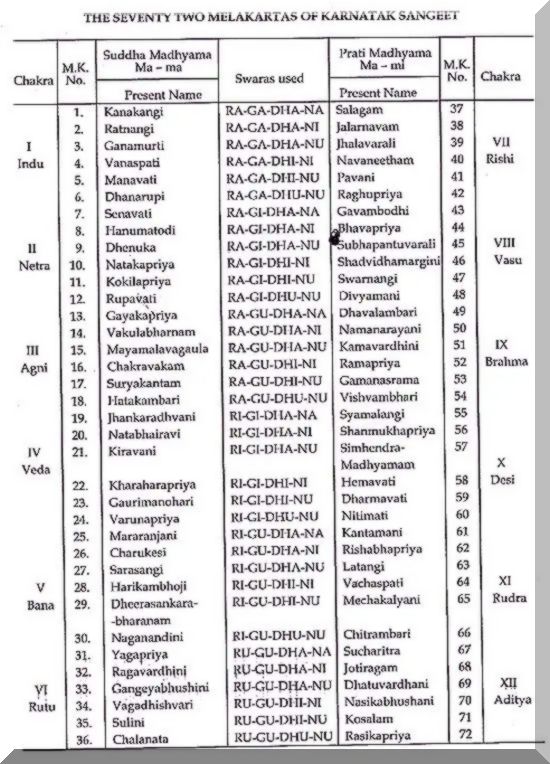
( Source : Raga Pravaham by Dr. Dhandapani and D. Pattammal)
**
Katapayadi
The schemes of 72 Mela and Mela-karta employed a system of deriving the Mela-number by referring to the first two syllables of its name. This helped in easy tracking of a Mela from among the 72. The system of assigning a prefix number to each Mela was adopted from the ancient Katapayadi formula which classifies the letters of the Sanskrit alphabets in a specified manner.
Some scholars believe that the Great Grammarian Panini (5th century BCE) was the first to come up with the idea of using letters of the alphabet to represent numbers. And, that the Brahmi numerals were developed by using letters or syllables as numerals.

But, it is not clear who introduced the practice of numbering the Melas by means of the Katapayadi prefixes. In the earlier references to Mela system (either by Sri Vidyaranya or Ramamatya or Pundarika Vittala) the prefixes were not mentioned. But, in the Appendix (Anubandha) to the Chatur-dandi-prakashika the Melas were already marked by Katapayadi prefixes.
According to the scheme, the consonants have numerals assigned as per the above table. All stand-alone vowels like a (अ) and ṛ (ऋ) are assigned to zero. In case of a conjunct, consonants attached to a non-vowel will not be valueless. The only consonant standing with a vowel is ya (य). So the corresponding numeral for kya (क्या) will be 1. There is no way of representing Decimal separator in the system.
Under this naming scheme, the number of a Mela-karta (Janaka) Raga is obtained by decoding the first two letters using the Katapaya scheme; and reversing it. For instance; For Divyamani – Di=8; and Va=4, giving 84. And reversing that you get 48, which is its Mela number. Once you get the Mela number you get its notes too
[ For more on that please check : http://rksanka.tripod.com/music/katapaya.html]
Melakarta File by courtesy of Sri Basavarjtalwar at https://upload.wikimedia.org/wikipedia/commons/0/0e/Melakarta.katapayadi.sankhya.72.png ]
Please click on the figure for an enlarged view.
Please do read the scholarly work A Karnatik Music Primer by Dr. Parthasarathy Sriram at
http://www.ae.iitm.ac.in/~sriram/karpri.html
References and Sources:
I gratefully acknowledge
- Caturdandiprakasika of Venkatamakhi by Dr. N.Ramanathan
- The Anukramaṇikā Gīta in the SSP by Sumithra Vasudev http://musicacademymadras.in/webjournal/sumithra.pdf
- Indian Music: History and Structure by Emmie Te Nijenhuis
- The “ka-Ta-pa-ya” scheme http://rksanka.tripod.com/music/katapaya.html
- A Brief Overview of the Evolution of Indian Music
https://sites.google.com/site/chitrakoota/Home/carnatic-music
6. Collected writings on Indian Music .Vol 2 by Dr. V. Raghavan
ALL PICTURES ARE FROM INTERNET


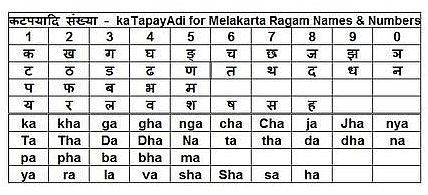





 Govinda Dikshita, a musician and a Kannada speaking (Hoysala Karnataka Brahmin) scholar, philosopher, statesman and musicologist hailing from Mysore, served as a Minister of three successive Kings of Thanjavuru, Achyutappa Nayaka (1560 AD-1614 AD), Raghunatha Nayaka (1600 AD-1645 AD) and Vijayaraghava Nayaka (1634 AD-1673 AD) , all of whom patronized Karnataka Samgita . Govinda Dikshita’s two sons Yagnanarayana Dikshita and Venkatershwara Dikshita or Venkatamakhin were both scholar- musicians. All the three were in the service of the Kings of Tanjore.
Govinda Dikshita, a musician and a Kannada speaking (Hoysala Karnataka Brahmin) scholar, philosopher, statesman and musicologist hailing from Mysore, served as a Minister of three successive Kings of Thanjavuru, Achyutappa Nayaka (1560 AD-1614 AD), Raghunatha Nayaka (1600 AD-1645 AD) and Vijayaraghava Nayaka (1634 AD-1673 AD) , all of whom patronized Karnataka Samgita . Govinda Dikshita’s two sons Yagnanarayana Dikshita and Venkatershwara Dikshita or Venkatamakhin were both scholar- musicians. All the three were in the service of the Kings of Tanjore.








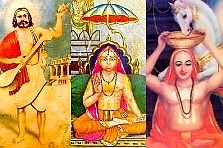


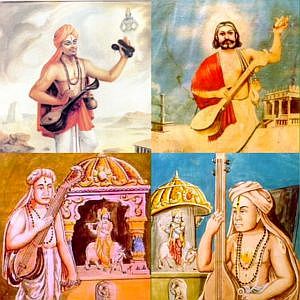
 Mahamahopadyaya Dr. R. Satyanarayana , who has rendered immense service to various field of study such as Music, Dance, Literature and Sri Vidya, explains that the Dhruva Prabandha after which Suladi was patterned employed nine different types of Taalas, while they were sung as a series of separate songs. Thereafter, there came into vogue a practice of treating each song as a stanza or Dhatu (or charana as it is now called) of one lengthy song. And, it was sung as one Prabandha called Suladi. Thus, the Suladi was a Taala-malika, the garland of Taalas or a multi-taala structure.
Mahamahopadyaya Dr. R. Satyanarayana , who has rendered immense service to various field of study such as Music, Dance, Literature and Sri Vidya, explains that the Dhruva Prabandha after which Suladi was patterned employed nine different types of Taalas, while they were sung as a series of separate songs. Thereafter, there came into vogue a practice of treating each song as a stanza or Dhatu (or charana as it is now called) of one lengthy song. And, it was sung as one Prabandha called Suladi. Thus, the Suladi was a Taala-malika, the garland of Taalas or a multi-taala structure.





